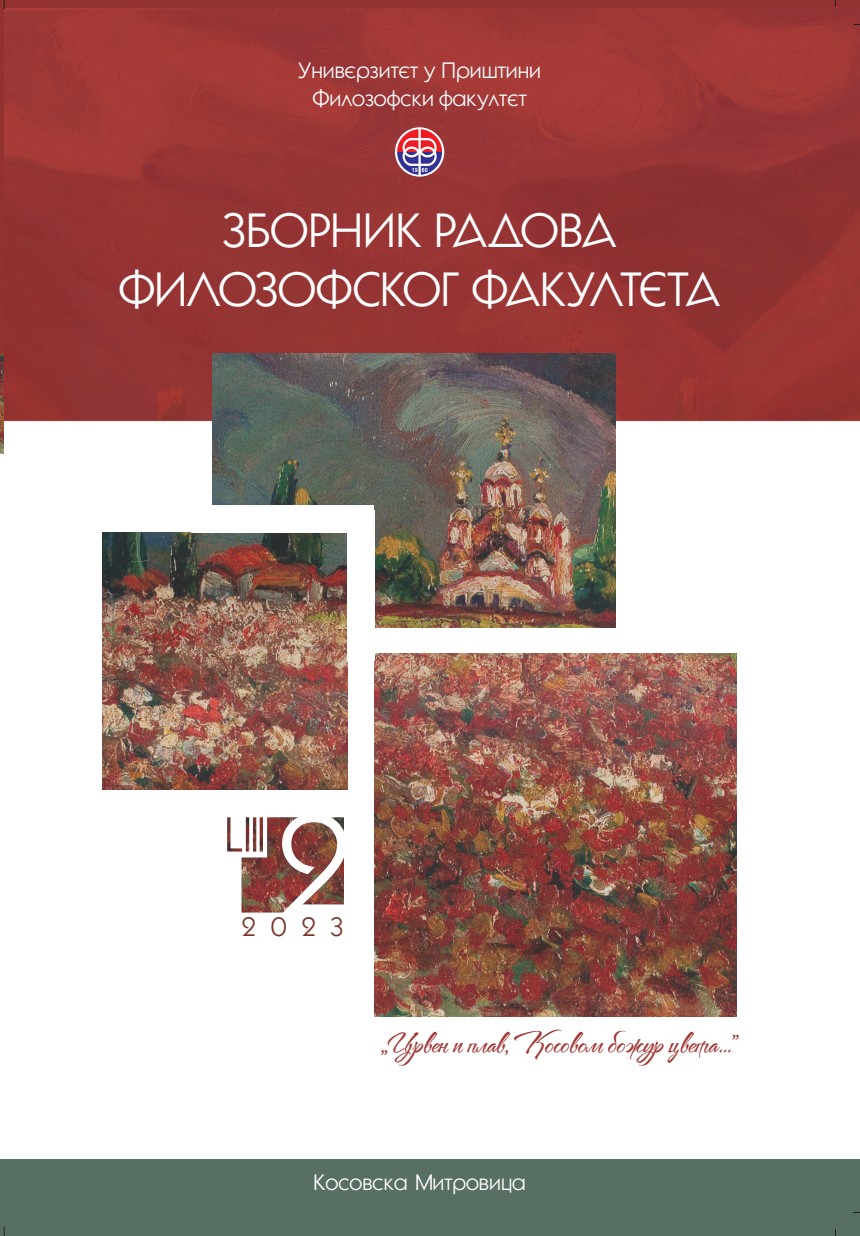Брестлитовски мир – узроци, споразум и последице
The Peace of Brest-Litovsk – Causes, Agreement and Consequences
Author(s): Žaklina Spalević, Dušan JerotijevicSubject(s): History, Recent History (1900 till today), Pre-WW I & WW I (1900 -1919)
Published by: Филозофски факултет, Универзитет у Приштини
Keywords: Imperial Russia; the Bolsheviks; Lenin; Germany; Eastern Front.
Summary/Abstract: At the beginning of the 20th century, the opposing interests of the great powers were more and more clearly outlined in international relations. Two alliances were created (the Central Powers and the Entente) which in some way connected certain countries according to a minimum of common interest. This primarily refers to the Entente bloc, because the three leading powers in it (France, Russia and the United Kingdom) had conflicting positions on some important issues (for example, the issue of control of the Bosphorus and Dardanelles, as well as the issue of Turkey’s survival in the Balkans, as well as Turkey as a regional power in general). After the attack of the Austro-Hungarian Monarchy on Serbia in July 1918, Imperial Russia immediately sided with the Kingdom of Serbia and entered the war, which it led on a front spanning thousands of kilometres from the Baltic to the Caucasus against the armies of all the Central Powers. After three years of gruelling war and the February Revolution, the chain of command and morale of the army collapsed after the February Revolution. An unsuccessful military campaign against the German army by the Kerensky government in the summer of 1917 led to complete chaos in the country, which led to the October Revolution and the seizure of power by the Bolsheviks. Lenin believed that capitulation was a necessity in the absence of another option. The main idea of the Soviet authorities was to show that the success of the socialist revolution was possible. Therefore, the Bolsheviks believed that the October Revolution was a prelude to a world revolution that would start with a domino effect from the heart of Europe, and that it would undo the negative consequences of signing the Brest-Litovsk Peace Agreement. The agreement was concluded on March 3, 1918 in Brest Litovsk. By signing the Brest-Litovsk agreement, which was made under unexpectedly humiliating conditions, Russia renounced all rights and claims to Poland and parts of Belarus, then to Finland, Estonia, Courland (the western part of Latvia), Livonia, and Lithuania. At the request of Talat Pasha, the Russians had to hand over parts of Transcaucasia (Ardahan, Kars, and Batum), which Russia won in the Russo-Turkish War, 1877–1878, to Turkey. German and Austro-Hungarian military troops also occupied a part of Russian territory across the border stipulated by this peace treaty up to the line: Narva-Pskov-Polock-Orsha-Gomel-Belgorod-Milerovo-Rostov on Don. The Brestlitovsk Agreement closed a large front and enabled German penetration deep into the interior of Russia. Russia lost a huge territory of 780,000 square kilometres where 56 million people lived before the war, i.e., a third of its population and where the country’s most important mining and industrial resources were located. Finally, on August 27, 1918, in Berlin, the Russian side signed the War Reparations Agreement, which stipulated that Russia pay six billion marks in compensation to Germany. Fortunately for the Bolsheviks, the Brestlitovsk Agreement lasted only eight months. In November 1918, Germany had to renounce the agreement, because that renunciation represented one of the very important conditions for the armistice. Based on the Armistice of Comienne and the Treaty of Versailles (Article 116), the Brest-Litovsk Agreement was annulled, which opened the door to the formation of the Soviet Union, which was created on the foundations of Imperial Russia through the bloody civil war that lasted from 1918 to 1922. Germany and the USSR, by signing the Peace of Rapala on April 16, 1922, renounced their territorial and financial claims to each other, after the Brestlitovsk Agreement. With this agreement, the two governments agreed on the normalization of their diplomatic relations.
Journal: Зборник радова Филозофског факултета у Приштини
- Issue Year: 53/2023
- Issue No: 2
- Page Range: 209-227
- Page Count: 19
- Language: Serbian

